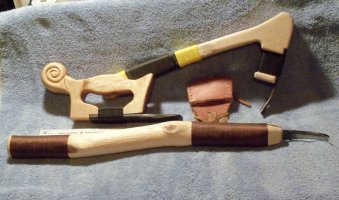I bought a worksharp tilting bench sharpening kit recently and have just tried it out.
I have one or two knives (two Mora Companions and a Hultafors heavy duty, plus an Ontario Rat 1) but they are all razor sharp as they have not yet been used. The only one that is blunt is my 12 old Spyderco Endura, so against all advice I decided to try and sharpen it. Yes, I am a fool.
It was used for a couple of years to cut packaging and cardboard until it went blunt, and has been lying around unused in a drawer for the last ten years.
So I thought sod it, if I mess it up it's no big deal.
I began with the fine diamond stone at 20 degrees but it made no impression. Then I thought the 17 angle might prove more effective. It didn't, but it certainly made the edge look a mess. I have watched videos and done plenty of research so I was careful to keep my arm rigid in order to maintain the angle, and I worked slowly.
So then I turned to the course diamond stone. I worked for ages on one side to get a burr- an uneven burr I might say; it was too big towards the end and two small further back. After many hundreds of passes I found it almost impossible to get a burr on the heel of the blade.
Eventually I had enough of a burr to sharpen the other side. Once again it took many hundreds of passes to get the burr down. My arms was aching, blisters were developing on my thumb and forefinger, and I eventually stopped and put the sharpener and knife away.
What have I learned?
I am no good at sharpening. I don't like sharpening. VG10 may not be a super steel, but it is not one I want to try and sharpen again. I have a feeling the coarse stone was not coarse enough.
In future I will make do with cheaper steels that are easier to sharpen (high carbon whenever possible and things like Aus 8 for stainless), always choose knives with Scandi grinds and sharpen them on sand paper.
I will also strop my knives after every use in order to cut down on regular grinding.
My Ontario Rat 1 is Aus 8. I was going to wait until the D2 versions were back in stock, but now I am glad I didn't.
My most recent purchase is a Real Steel Bushcraft Plus in Sandvik 14c28n. It is a very nice knife of a quality well above its price, but I have no idea if I will be able to sharpen the flat grind blade. I wish now I had bought the Scandi grind version.
Oh well. You live and learn. To be honest the knives I am drawn to most are the cheap Moras and the Hultafors. I could have lived without the others.
I have one or two knives (two Mora Companions and a Hultafors heavy duty, plus an Ontario Rat 1) but they are all razor sharp as they have not yet been used. The only one that is blunt is my 12 old Spyderco Endura, so against all advice I decided to try and sharpen it. Yes, I am a fool.
It was used for a couple of years to cut packaging and cardboard until it went blunt, and has been lying around unused in a drawer for the last ten years.
So I thought sod it, if I mess it up it's no big deal.
I began with the fine diamond stone at 20 degrees but it made no impression. Then I thought the 17 angle might prove more effective. It didn't, but it certainly made the edge look a mess. I have watched videos and done plenty of research so I was careful to keep my arm rigid in order to maintain the angle, and I worked slowly.
So then I turned to the course diamond stone. I worked for ages on one side to get a burr- an uneven burr I might say; it was too big towards the end and two small further back. After many hundreds of passes I found it almost impossible to get a burr on the heel of the blade.
Eventually I had enough of a burr to sharpen the other side. Once again it took many hundreds of passes to get the burr down. My arms was aching, blisters were developing on my thumb and forefinger, and I eventually stopped and put the sharpener and knife away.
What have I learned?
I am no good at sharpening. I don't like sharpening. VG10 may not be a super steel, but it is not one I want to try and sharpen again. I have a feeling the coarse stone was not coarse enough.
In future I will make do with cheaper steels that are easier to sharpen (high carbon whenever possible and things like Aus 8 for stainless), always choose knives with Scandi grinds and sharpen them on sand paper.
I will also strop my knives after every use in order to cut down on regular grinding.
My Ontario Rat 1 is Aus 8. I was going to wait until the D2 versions were back in stock, but now I am glad I didn't.
My most recent purchase is a Real Steel Bushcraft Plus in Sandvik 14c28n. It is a very nice knife of a quality well above its price, but I have no idea if I will be able to sharpen the flat grind blade. I wish now I had bought the Scandi grind version.
Oh well. You live and learn. To be honest the knives I am drawn to most are the cheap Moras and the Hultafors. I could have lived without the others.
Last edited:


